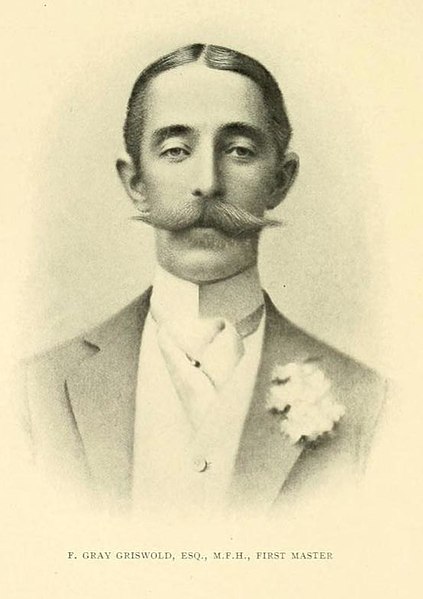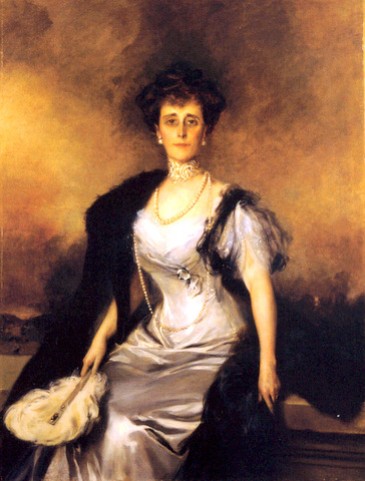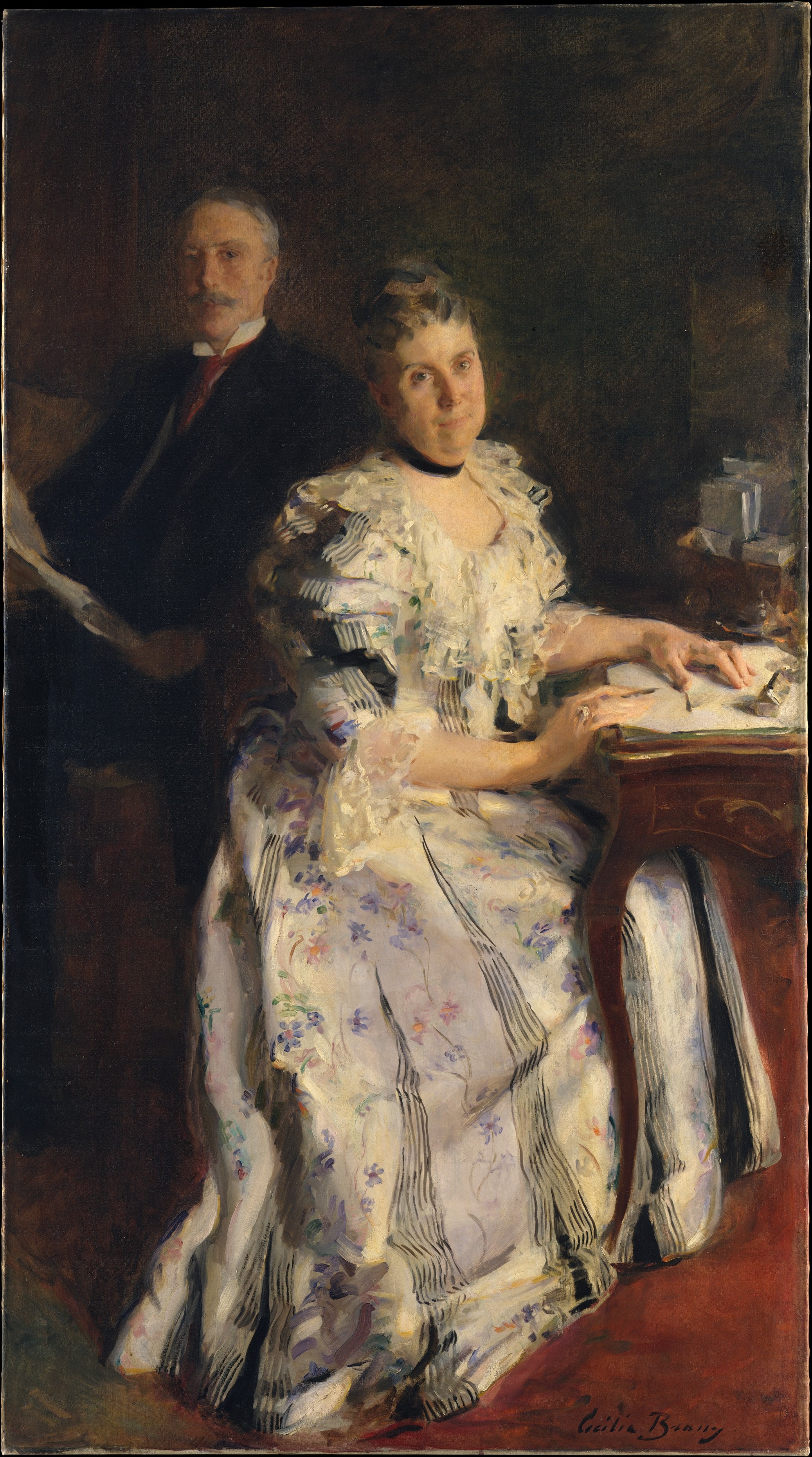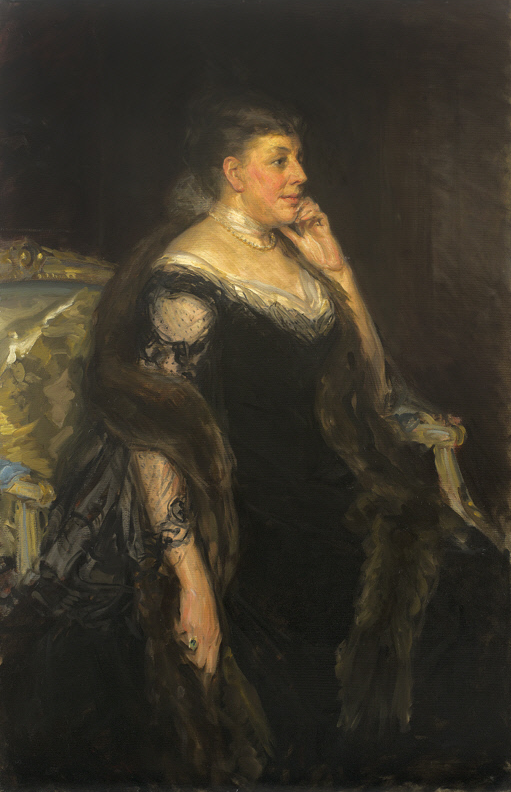The Four Hundred (Gilded Age) on:
[Wikipedia]
[Google]
[Amazon]
The Four Hundred was a list of New York society during the
''Society as I Have Found It''
Cassell, New York further ostracized him from the "old guard", who valued their privacy in an era when the leaders of society were the equivalent of modern movie stars.














 Besides containing far fewer than 400 people, McAllister's list "abounded in inaccuracies: names were misspelled or incomplete and many spouses omitted or included although they were dead." The rules of the time dictated that "only the eldest unmarried daughter of a family carried the title "Miss," with no given name," but he regularly ignored the rule.
Besides containing far fewer than 400 people, McAllister's list "abounded in inaccuracies: names were misspelled or incomplete and many spouses omitted or included although they were dead." The rules of the time dictated that "only the eldest unmarried daughter of a family carried the title "Miss," with no given name," but he regularly ignored the rule.
The First Four Hundred: Mrs. Astor's New York in the Gilded Age
', Rizzoli, New York (2000) {{authority control Gilded Age Wealth in the United States High society (social class) American upper class Upper class culture in the United States Cultural history of New York City Social class in the United States Class-related slurs People included in New York Society's Four Hundred History of women in New York City Upper class culture in New York City New York City-related lists
Gilded Age
In United States history, the Gilded Age was an era extending roughly from 1877 to 1900, which was sandwiched between the Reconstruction era and the Progressive Era. It was a time of rapid economic growth, especially in the Northern and Wes ...
, a group that was led by Caroline Schermerhorn Astor
Caroline Webster "Lina" Schermerhorn Astor (September 22, 1830 – October 30, 1908) was a prominent American socialite of the second half of the 19th century who led the Four Hundred. Famous for being referred to later in life as "the Mrs. Asto ...
, ''the'' "Mrs. Astor", for many years. After her death, her role in society was filled by three women: Mamie Fish
Marion Graves Anthon Fish (nickname, "Mamie"; June 8, 1853 – May 25, 1915), often referred to by contemporaries as Mrs. Stuyvesant Fish, was an American socialite and self-styled "fun-maker" of the Gilded Age. She and her husband, Stuyvesant Fis ...
, Theresa Fair Oelrichs
Theresa Alice "Tessie" Fair (June 30, 1871 – November 22, 1926) was an American socialite. She went from being the daughter of a hard-scrabble California miner to become heiress to a fortune in Comstock Lode gold and silver, the wife of steamsh ...
, and Alva Belmont, known as the "triumvirate" of American society.
On February 16, 1892, ''The New York Times
''The New York Times'' (''the Times'', ''NYT'', or the Gray Lady) is a daily newspaper based in New York City with a worldwide readership reported in 2020 to comprise a declining 840,000 paid print subscribers, and a growing 6 million paid d ...
'' published the "official" list of those included in the Four Hundred as dictated by social arbiter Ward McAllister
Samuel Ward McAllister (December 28, 1827 – January 31, 1895) was a popular arbiter of social taste in the Gilded Age of late 19th-century America. He was widely accepted as the authority as to which families could be classified as the cream o ...
, Mrs. Astor's friend and confidant, in response to lists proffered by others, and after years of clamoring by the press to know who, exactly, was on the list.
History
In the decades following theAmerican Civil War
The American Civil War (April 12, 1861 – May 26, 1865; also known by other names) was a civil war in the United States. It was fought between the Union ("the North") and the Confederacy ("the South"), the latter formed by states ...
, the population of New York City grew almost exponentially, and immigrants and wealthy ''arrivistes'' from the Midwestern United States
The Midwestern United States, also referred to as the Midwest or the American Midwest, is one of four census regions of the United States Census Bureau (also known as "Region 2"). It occupies the northern central part of the United States. I ...
began challenging the dominance of the old New York Establishment. Aided by McAllister, Mrs. Astor attempted to codify proper behavior and etiquette, as well as determine who was acceptable among the ''arrivistes'', as champions of old money and tradition.
Reportedly, Ward McAllister
Samuel Ward McAllister (December 28, 1827 – January 31, 1895) was a popular arbiter of social taste in the Gilded Age of late 19th-century America. He was widely accepted as the authority as to which families could be classified as the cream o ...
coined the phrase "the Four Hundred" by declaring that there were "only 400 people in fashionable New York Society." According to him, this was the number of people in New York who really mattered; the people who felt at ease in the ballrooms of high society. In 1888, McAllister told the ''New-York Tribune
The ''New-York Tribune'' was an American newspaper founded in 1841 by editor Horace Greeley. It bore the moniker ''New-York Daily Tribune'' from 1842 to 1866 before returning to its original name. From the 1840s through the 1860s it was the domi ...
'' that "If you go outside that number," he warned, "you strike people who are either not at ease in a ballroom or else make other people not at ease."
While the number four hundred has popularly been linked to the capacity of Mrs. Astor
Caroline Webster "Lina" Schermerhorn Astor (September 22, 1830 – October 30, 1908) was a prominent American socialite of the second half of the 19th century who led the The Four Hundred (1892), Four Hundred. Famous for being referred to later ...
's ballroom at her large brownstone home at 350 Fifth Avenue and East 34th Street (today the site of the Empire State Building), the exact origins remain unknown. There were, however, other lists in New York around the same time which necessitated a maximum capacity of four hundred, including Delmonico's restaurant
Delmonico's is the name of a series of restaurants that operated in New York City, with the present version located at 56 Beaver Street in the Financial District of Manhattan. The original version was widely recognized as the United States ...
and local cotillion
The cotillion (also cotillon or French country dance) is a social dance, popular in 18th-century Europe and North America. Originally for four couples in square formation, it was a courtly version of an English country dance, the forerunner ...
dances, that may have contributed to the particular sum of four hundred.
February 1892 list
In response to competing lists naming the purported members of New York society published in the ''New York World
The ''New York World'' was a newspaper published in New York City from 1860 until 1931. The paper played a major role in the history of American newspapers. It was a leading national voice of the Democratic Party. From 1883 to 1911 under pub ...
'' that insisted New York society was, in fact, made up of only 150 people, McAllister spoke with the ''Times'', refuting the ''World'' article and giving the paper the "official list", which was published on February 16, 1892 and quoted McAllister stating:
The so-called Four Hundred has not been cut down or dwindled to 150 names. The nonsense, don't you know, printed to that effect in the ''The list, purported to include the crème de la crème of New York society, consisted largely of "bankers, lawyers, brokers, real estate men, and railroaders, with one editor (World In its most general sense, the term "world" refers to the totality of entities, to the whole of reality or to everything that is. The nature of the world has been conceptualized differently in different fields. Some conceptions see the worl ...'' and some other papers, has made a very bad impression that will reflect badly against them, you understand. That list of names, you understand, printed on Sunday, did not come from me, don't you see. It is unauthorized, don't you see. But it is accurate as far as it goes, you understand. It is incomplete and does injustice, you understand, to many eligible millionaires. Think of leaving out such names, don't you know, as Chauncey M. Depew, Gen.Alexander S. Webb Alexander Stewart Webb (February 15, 1835 – February 12, 1911) was a career United States Army officer and a Union general in the American Civil War who received the Medal of Honor for gallantry at the Battle of Gettysburg. After the war, he w ..., Mr. and Mrs. Edward Cooper, Mr. and Mrs.Luther Kountze Luther Kountze (October 29, 1841 – April 17, 1918) was an American banker, responsible for helping the city of Denver, Colorado in a time of need and leaving a philanthropic legacy in Morristown, New Jersey. He founded a late-19th century na ..., Mr. and Mrs.Robert Goelet Robert Goelet Jr. (September 29, 1841 – April 27, 1899) was an American heir, businessman and yachtsman from New York City during the Gilded Age. Early life Robert Goelet was born on September 29, 1841 in Manhattan, New York City, to Sarah ..., Mr. and Miss Wilson, Miss Greene, and many others! Don't you understand, it is absurd, senseless. Let me explain, don't you know. There are three dinner dances, don't you know, during the season, and the invitations, don't you see, are issued to different ladies and gentlemen each time, do you understand? So at each dinner dance, you know, are only 150 people of the highest set, don't you know. So, during the season, you see, 400 different invitations are issued. Wait a moment and I will give you a correct list, don't you know, of the people who form what is known as the Four Hundred. Do you understand it will be authorized, reliable, and, don’t you know, the only correct list.
Paul Dana
Paul Dana (; April 15, 1975 – March 26, 2006) was an American racing driver in the IndyCar Series.
Early life
Born in St. Louis, Missouri, Dana graduated from the Medill School of Journalism at Northwestern University. Before becoming a race ...
of ''The New York Sun
''The New York Sun'' is an American online newspaper published in Manhattan; from 2002 to 2008 it was a daily newspaper distributed in New York City. It debuted on April 16, 2002, adopting the name, motto, and masthead of the earlier New Yor ...
''), one publisher, one artist, and two architects." It also included a mix of both "Nobs" and "Swells". "Nobs" came from old money (including the Astors, the Goelets, the Livingstons, and the Van Rensselaers), and "Swells" were representatives of the nouveau riche
''Nouveau riche'' (; ) is a term used, usually in a derogatory way, to describe those whose wealth has been acquired within their own generation, rather than by familial inheritance. The equivalent English term is the "new rich" or "new money" ( ...
, who Mrs. Astor felt, begrudgingly, were able to partake in polite society (best personified by the Vanderbilt family
The Vanderbilt family is an American family who gained prominence during the Gilded Age. Their success began with the shipping and railroad empires of Cornelius Vanderbilt, and the family expanded into various other areas of industry and philanthr ...
).
Criticism and backlash
After McAllister released the names of the Four Hundred in ''The New York Times'', there was significant backlash, both against the idea of a definitive list of "acceptable society" and McAllister himself. The papers dubbed him "Mr. Make-a-Lister" and, in combination with his memoirs published in 1890, entitled ''Society as I Have Found It'',Ward McAllister (1890)''Society as I Have Found It''
Cassell, New York further ostracized him from the "old guard", who valued their privacy in an era when the leaders of society were the equivalent of modern movie stars.
William d'Alton Mann
William d'Alton Mann (September 27, 1839 – May 17, 1920) was an American Civil War soldier, businessman, and newspaper and magazine publisher.
Early life
He was born in Sandusky, Ohio on September 27, 1839.
Career
During the Civil War, M ...
, who owned '' Town Topics'', a gossip magazine, considered it his duty to expose the sins of society and regularly criticized the Four Hundred.
Several years later, author O. Henry released a collection of short stories, entitled ''The Four Million
''The Four Million'' is the second published collection of short stories by O. Henry originally released on April 10, 1906, by McClure, Phillips & Co. in New York. There are twenty-five stories of various lengths including several of his best kno ...
'', a reaction to this phrase, expressing his opinion that every human being in New York was worthy of notice.
In 2009, the Museum of the City of New York
A museum ( ; plural museums or, rarely, musea) is a building or institution that cares for and displays a collection of artifacts and other objects of artistic, cultural, historical, or scientific importance. Many public museums make thes ...
compiled its own list, entitled "The New York City 400", of the 400 "movers and shakers" who made a difference in the 400 years of New York City history since Henry Hudson
Henry Hudson ( 1565 – disappeared 23 June 1611) was an English sea explorer and navigator during the early 17th century, best known for his explorations of present-day Canada and parts of the northeastern United States.
In 1607 and 16 ...
arrived in 1609. McAllister was "the only person on the original Four Hundred to also make the museum's list."
Named members of "the Four Hundred"













 Besides containing far fewer than 400 people, McAllister's list "abounded in inaccuracies: names were misspelled or incomplete and many spouses omitted or included although they were dead." The rules of the time dictated that "only the eldest unmarried daughter of a family carried the title "Miss," with no given name," but he regularly ignored the rule.
Besides containing far fewer than 400 people, McAllister's list "abounded in inaccuracies: names were misspelled or incomplete and many spouses omitted or included although they were dead." The rules of the time dictated that "only the eldest unmarried daughter of a family carried the title "Miss," with no given name," but he regularly ignored the rule.
See also
*Bradley-Martin Ball
The Bradley-Martin Ball was a lavish Costume party, costume ball at the Waldorf-Astoria Hotel, Waldorf Hotel in New York City on the night of February 10, 1897. Cornelia Bradley-Martin, wife of Bradley Martin, organized the ball. Eight hundred soci ...
* List of Gilded Age mansions
References
;Notes ;SourcesExternal links
* Patterson, Jerry E.The First Four Hundred: Mrs. Astor's New York in the Gilded Age
', Rizzoli, New York (2000) {{authority control Gilded Age Wealth in the United States High society (social class) American upper class Upper class culture in the United States Cultural history of New York City Social class in the United States Class-related slurs People included in New York Society's Four Hundred History of women in New York City Upper class culture in New York City New York City-related lists